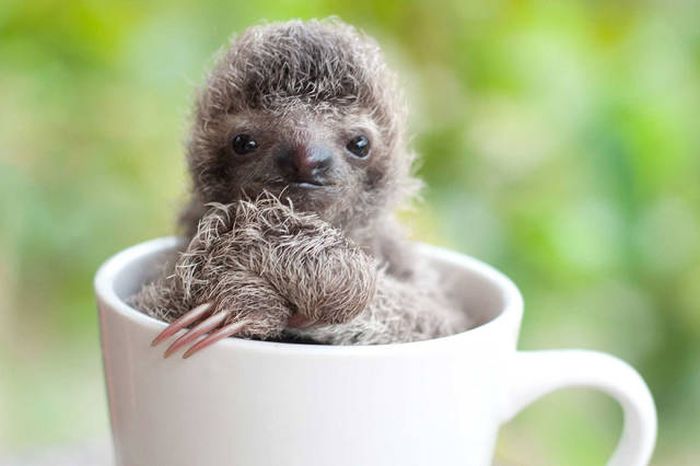|
|
Baby Sloth
|
Sloth furs exhibit specialized functions: the outer hairs grow in a direction opposite from that of other mammals. In most mammals, hairs grow toward the extremities, but because sloths spend so much time with their legs above their bodies, their hairs grow away from the extremities in order to provide protection from the elements while the sloth hangs upside down. In most conditions, the fur hosts two species of symbiotic cyanobacteria, which provide camouflage. Because of the cyanobacteria, sloth fur is a small ecosystem of its own, hosting many species of non-parasitic insects. Sloths have short, flat heads; big eyes; a short snout; long legs; and tiny ears. They also have stubby tails, usually 6–7 cm long. Altogether, sloths' bodies usually are anywhere between 50 and 60 cm long.
Sloths' claws serve as their only natural defense. A cornered sloth may swipe at its attackers in an effort to scare them away or wound them. Despite sloths' apparent defenselessness, predators do not pose special problems: sloths blend in with the trees and, moving only slowly, do not attract attention. Only during their infrequent visits to ground level do they become vulnerable. The main predators of sloths are the jaguar, the harpy eagle, and humans. The majority of sloth deaths in Costa Rica are due to contact with electrical lines and poachers. Despite their adaptation to living in trees, sloths make competent swimmers. Their claws also provide a further unexpected deterrent to human hunters: when hanging upside-down in a tree they are held in place by the claws themselves and often do not fall down even if shot.
|
|









